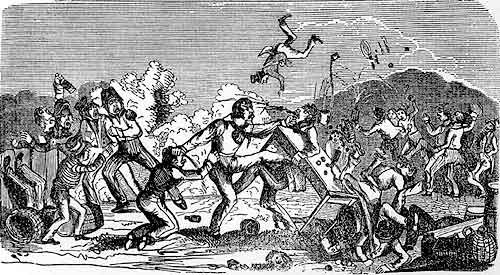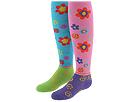Understanding Chinese Culture #2
/ Cyrille Javary has some interesting things to say about the concept of yin-yang:
Cyrille Javary has some interesting things to say about the concept of yin-yang:Since the idea of duality is so familiar to us, we are often presented with lists of the opposite qualities of yin and yang, such as:
yin yang
dark light
cold hot
low high
night day
interior exterior
rest action
This kind of list may be helpful, but it has one serious disadvantage, and that is the implied existence of the verb "to be" connecting the headings with each of their attributes. This kind of copulative verb, which binds a subject and an object, does not exist in Chinese. A Chinese cannot say that yin is dark, cold, or low. He or she cannot therefore think that dark, cold and so forth, are characteristics of yin but only that they are the results that manifest because of its action. Yin is not dark, it is a movement of darkness; it is not cold but a tendency toward getting cold; it is neither interior nor at rest but rather turning inwards and slowing down. The best way to express this particularity might be to use the verb "to become" in place of "to be." Therefore, yang would not be light but becoming light; it is not hot, exterior, or action but is becoming hot, becoming external, or becoming action.
Yin and yang are the concerted movements of life and exist only within the dynamics that unite them. (Javary 1997, p.7-8)
Roger Ames adds something to this thought and returns us to the concept yet not-concept of Dao:
In fact, categories used to define a Chinese world are fluid, and must be seen as often crossing the borders of time, space, and matter in an unfamiliar way. Dao so understood offends against the most basic of Western cultural distinctions, mixing together subject and object, as well as things, actions attributes, and modalities. Dao is at once"what is" (things and their attributes) and "how things are" (actions and their modalities), it is "who knows" as well as "what is known." (Ames 1998, 27-28)
Referring back to the previous post, ....The way in which conduct resolves and rectifies qi implies at least a two directional quality of time. Such action does not require intentionality (yi), rather it is our true nature (de), it is wuwei. Our completely resolved ancestors are like a supportive background to our actions. Resolved ancestors express themselves through us effortlessly as appropriate conduct --gongfu.

 The perfect expression of a Daoist practice is simultaneously resolving and inspiring. Inappropriate conduct leaves things (qi) unresolved. Appropriate conduct resolves things (zhengqi). Unresolved ancestors manifest through the actions of those still living -- their descendants. Thus, we can see religious merit or gongfu, as the practice of resolving our ancestors inappropriate conduct through our own appropriate conduct. (
The perfect expression of a Daoist practice is simultaneously resolving and inspiring. Inappropriate conduct leaves things (qi) unresolved. Appropriate conduct resolves things (zhengqi). Unresolved ancestors manifest through the actions of those still living -- their descendants. Thus, we can see religious merit or gongfu, as the practice of resolving our ancestors inappropriate conduct through our own appropriate conduct. ( Here is a fun article about the Motion and Gait Analyisis Laboritory at Stanford University.
Here is a fun article about the Motion and Gait Analyisis Laboritory at Stanford University. In recent years a lot of qigong that is popularly taught has been categorized as martial arts qigong. (I think it is mistake to use this category in the first place, but if we do use it we will have to divide it up further.) This would be qigong created by and for people who were put in the position of needing to fight.
In recent years a lot of qigong that is popularly taught has been categorized as martial arts qigong. (I think it is mistake to use this category in the first place, but if we do use it we will have to divide it up further.) This would be qigong created by and for people who were put in the position of needing to fight. xing yi and bagua. This type has the flavor and reluctance characteristic of those who cultivate weakness. In this tradition the battle field is viewed as an expression of qi. The battle field substitutes for the body in which the smooth flowing of qi is a priority, not avoiding war, but being uncontentious. Looking for resolution is different than trying to win, although winning may be necessary for your survival. This is not a passive tradition, in fact attacking first can easily be the quickest cleanest resolution with the least loss of life on both sides. How this tradition came about is an interesting question I plan to continue exploring. Perhaps people who had been cultivating weakness, were drafted and this was a natural expression of their circumstance. This third traditions takes the longest to develop usable skills, and seems like a privileged position with in a military world.
xing yi and bagua. This type has the flavor and reluctance characteristic of those who cultivate weakness. In this tradition the battle field is viewed as an expression of qi. The battle field substitutes for the body in which the smooth flowing of qi is a priority, not avoiding war, but being uncontentious. Looking for resolution is different than trying to win, although winning may be necessary for your survival. This is not a passive tradition, in fact attacking first can easily be the quickest cleanest resolution with the least loss of life on both sides. How this tradition came about is an interesting question I plan to continue exploring. Perhaps people who had been cultivating weakness, were drafted and this was a natural expression of their circumstance. This third traditions takes the longest to develop usable skills, and seems like a privileged position with in a military world. Winter is for Storing Qi. Winter is the time to just maintain your practice. At this time we try not to lose anything we’ve developed or gained, and of course we try not to get injured. It is the time to practice lots of stillness. This kind of practice is called returning to the root, stillness "tonifies" the Kidneys. In contrast it is also the time to perfect circulation. Lots of Winter practices have to do with testing or improving circulation, they include, various types of bathing, scrubbing, pounding, slapping, scraping, shaking, etc...
Winter is for Storing Qi. Winter is the time to just maintain your practice. At this time we try not to lose anything we’ve developed or gained, and of course we try not to get injured. It is the time to practice lots of stillness. This kind of practice is called returning to the root, stillness "tonifies" the Kidneys. In contrast it is also the time to perfect circulation. Lots of Winter practices have to do with testing or improving circulation, they include, various types of bathing, scrubbing, pounding, slapping, scraping, shaking, etc...
 need? Isn’t there some point at which more power training is just silly. Isn’t that the point of a lot of Kungfu movies? If my punches can break bones, and knock a man 50 pounds heavier than me to the ground, do I need more?
need? Isn’t there some point at which more power training is just silly. Isn’t that the point of a lot of Kungfu movies? If my punches can break bones, and knock a man 50 pounds heavier than me to the ground, do I need more?
 increasing your heart rate enough to break a sweat. Over time you will be able to move faster and more vigorously without increasing your heart rate.
increasing your heart rate enough to break a sweat. Over time you will be able to move faster and more vigorously without increasing your heart rate. The issue of whether or not a particular martial art is effective or not comes up all the time. What is realistic?
The issue of whether or not a particular martial art is effective or not comes up all the time. What is realistic? barehanded fighting that still influences how we think about fights today.
barehanded fighting that still influences how we think about fights today. It was a throwing game. If any part of your body besides your feet touched the ground you lost the bout.
It was a throwing game. If any part of your body besides your feet touched the ground you lost the bout. all). Practicing very slowly at first, have your partner use their arms to make contact with your arms on the outside of your ring. Keeping contact your partner then slowly moves their hands toward your neck. A small increase in the size of your ring will arrest their progress (once they are stopped they should not keep trying but instead break contact and start again). This un-trains the defensive response often called against the wall, meaning using your back muscles to pull your arms apart (a reflex we use to protect our head and neck when falling backwards).
all). Practicing very slowly at first, have your partner use their arms to make contact with your arms on the outside of your ring. Keeping contact your partner then slowly moves their hands toward your neck. A small increase in the size of your ring will arrest their progress (once they are stopped they should not keep trying but instead break contact and start again). This un-trains the defensive response often called against the wall, meaning using your back muscles to pull your arms apart (a reflex we use to protect our head and neck when falling backwards).